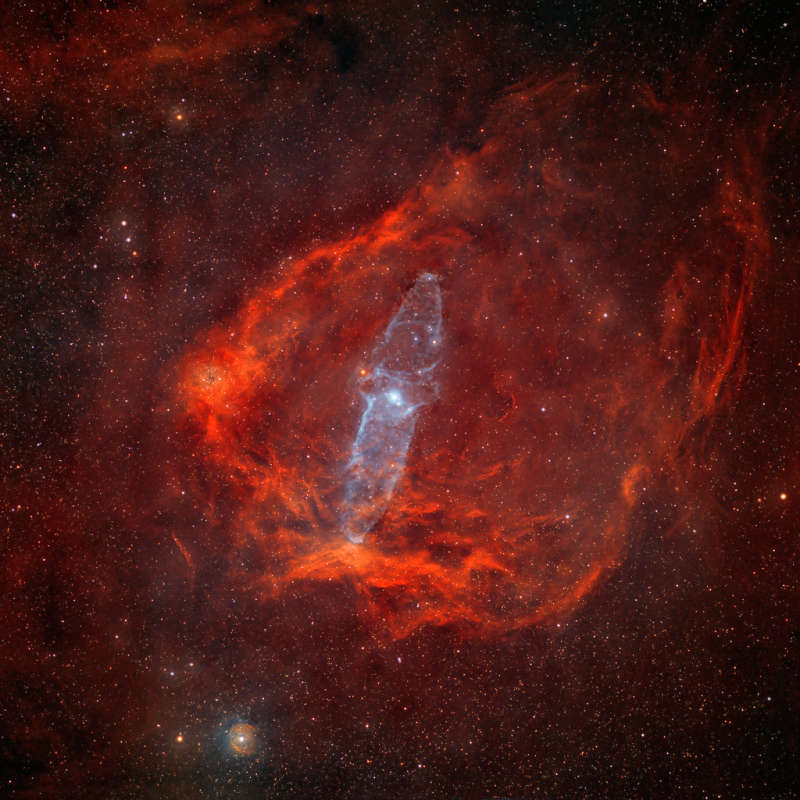
|
Credit & Copyright: Rolf
Geissinger
Explanation:
Very faint but also very large on planet Earth's sky, a
giant Squid Nebula cataloged as Ou4, and Sh2-129 also known as the
Flying Bat Nebula, are both caught in this cosmic scene
toward the royal constellation Cepheus.
Composed
with almost 17 hours of narrowband image data,
the telescopic field of view is 4 degrees or 8 Full Moons across.
Discovered in 2011 by
French astro-imager Nicolas
Outters, the Squid Nebula's alluring
bipolar shape is distinguished here
by the telltale blue-green
emission from
doubly ionized oxygen atoms.
Though apparently completely surrounded by the reddish hydrogen
emission region Sh2-129, the true distance and nature
of the Squid Nebula have been difficult to determine.
Still, a recent
investigation suggests Ou4 really does lie
within Sh2-129
some 2,300 light-years away.
Consistent with that scenario, Ou4 would represent a spectacular
outflow driven by HR8119, a
triple
system of hot, massive stars seen near the center of the nebula.
The truly giant Squid Nebula
would physically be nearly 50 light-years across.
|
January February March April May June July August September October November December |
| |||||||||||||||||||||||||||||||||||||||||||||||||||||||
NASA Web Site Statements, Warnings, and Disclaimers
NASA Official: Jay Norris. Specific rights apply.
A service of: LHEA at NASA / GSFC
& Michigan Tech. U.
Based on Astronomy Picture
Of the Day
Publications with keywords: emission nebula
Publications with words: emission nebula
See also:
- APOD: 2025 December 9 Á The Heart of the Soul Nebula
- APOD: 2025 September 19 Á The NGC 6914 Complex
- APOD: 2025 September 10 Á The Great Lacerta Nebula
- APOD: 2025 July 21 Á Cats Paw Nebula from Webb Space Telescope
- APOD: 2025 July 16 Á The Rosette Nebula from DECam
- APOD: 2025 July 5 Á Ou4: The Giant Squid Nebula
- APOD: 2025 June 26 Á The Seagull Nebula
